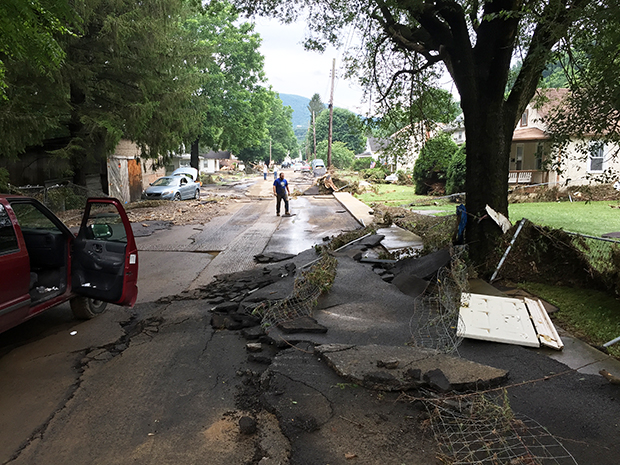After decades of steady decline, Christianity in the United States appears to have reached a period of relative stability, according to the Pew Research Center latest Religious Landscape Study. The survey, which included more than 36,000 U.S. adults, finds that 62 percent of Americans now identify as Christian, a figure that has remained largely unchanged since 2020, even as the long-term trend shows a decline from 78 percent in 2007. Protestants constitute the largest segment of this population, representing roughly four-in-ten adults, while Catholics account for nearly one-fifth. Smaller Christian groups, including members of the Church of Jesus Christ of Latter-day Saints, Orthodox Christians, and Jehovah’s Witnesses, collectively make up about 6 percent of U.S. adults.
Within Protestantism, the evangelical tradition remains the largest, though its share has fallen from 26 percent in 2007 to 23 percent today. Mainline Protestants now make up 11 percent, down from 18 percent, and historically Black Protestant churches represent 5 percent, slightly lower than their 7 percent share in 2007. The Southern Baptist Convention remains the nation’s largest single Protestant denomination, though its membership has declined from 6.7 percent of adults in 2007 to 4.4 percent in 2023-24. Other sizable denominations include Pentecostal churches, United Methodists, and Lutheran congregations, each with varying levels of stability or slight decline over the last two decades. Catholics have maintained a steady share of the population, fluctuating between 19 and 21 percent in Pew surveys conducted since 2014.
The survey also highlights a gradual narrowing of the gender gap in religious participation. Historically, women have been more religious than men, with higher rates of daily prayer, church attendance, and religious affiliation. In 2007, 17 percentage points separated men and women in daily prayer rates; in the new survey, the gap has narrowed to 13 points. Among the youngest adults, ages 18 to 24, the difference is even smaller: 30 percent of women report praying daily compared with 26 percent of men, a difference that is not statistically significant. While women remain more religious than men across all age groups, the narrowing gap signals generational shifts in religious engagement.
Religious upbringing continues to strongly influence adult faith, though its effect appears less “sticky” among younger Americans. Among adults ages 74 and older who were raised in highly religious households and attended services weekly, 51 percent remain highly religious. By contrast, only 28 percent of the youngest adults who grew up similarly religious maintain high levels of faith and religious practice today. Those raised in nonreligious households are even more likely to remain unaffiliated, with 76 percent of the youngest adults maintaining low religious engagement. Overall, about 40 percent of U.S. adults report attending religious services less frequently than they did in childhood, and roughly one-third say religion is less important to them today than it was in their family of origin.
Religious intermarriage also influences adult religious practice and child-rearing. Approximately 26 percent of married Americans have a spouse of a different religious identity, and those in religiously mixed marriages tend to participate less actively in religious practices than those whose spouses share their faith. Among parents of minor children, 42 percent report praying or reading scripture with their children, and 40 percent send their children to some form of religious education or private school. Participation in religious education and family worship is significantly higher among parents in marriages where both partners share the same faith.
Religious switching remains a major factor in the long-term decline of Christianity. The survey finds that 35 percent of U.S. adults have changed religious affiliation between childhood and adulthood, with Christianity losing far more adherents than it gains. Among adults raised Christian, 22 percent no longer identify as Christians, while only a small fraction of the unaffiliated or non-Christian population converts to Christianity. The ratio of Christians lost to converts gained is especially stark for Catholicism, which loses 8.4 people for every new convert, while Protestants lose 1.8 adherents for each gain. By contrast, the religiously unaffiliated gain nearly six people for every person who leaves, underscoring the continuing growth of religious “nones” in the United States.
Demographic changes within the Christian population also reflect broader shifts in the U.S. population. Among Christians in the survey, 61 percent are White, 18 percent are Hispanic, and 13 percent are Black. Historically Black Protestant churches remain overwhelmingly Black, while Catholic and other Protestant congregations show more racial and ethnic diversity. Religious attendance is also affected by race and upbringing, with one-third of servicegoers attending congregations where they are not part of the racial or ethnic majority.
Despite these demographic and generational shifts, spirituality remains widespread. Large majorities of Americans across age groups believe in a soul, God, or some form of life beyond the natural world, and a significant portion believe in an afterlife. This enduring spiritual outlook suggests that while formal religious affiliation may be stabilizing, belief in higher powers and spiritual matters continues to be a central aspect of American life.
The 2023-24 Religious Landscape Study paints a complex portrait: Christianity has slowed its decline, religious participation among young adults remains lower than previous generations, and the growth of the religiously unaffiliated continues. The persistence of faith across generations appears weaker than in the past, but the country’s spiritual landscape remains resilient, shaped by upbringing, family, and personal conviction. How these trends will evolve as younger cohorts age remains uncertain, but the survey provides the most detailed snapshot yet of America’s shifting religious identity.
Latest posts by Moroni Channel News (see all)
- After Years of Decline, Christianity in the U.S. Shows Signs of Stabilizing - November 19, 2025
- Church of Jesus Christ opens first chapel in one of world’s most Muslim nations - November 13, 2025
- U.S. Lawmakers Respond to Surge in Violence Against Christians in Nigeria - November 2, 2025
- LDS Church mentioned in movie about the founding of Tinder and Bumble - October 30, 2025




